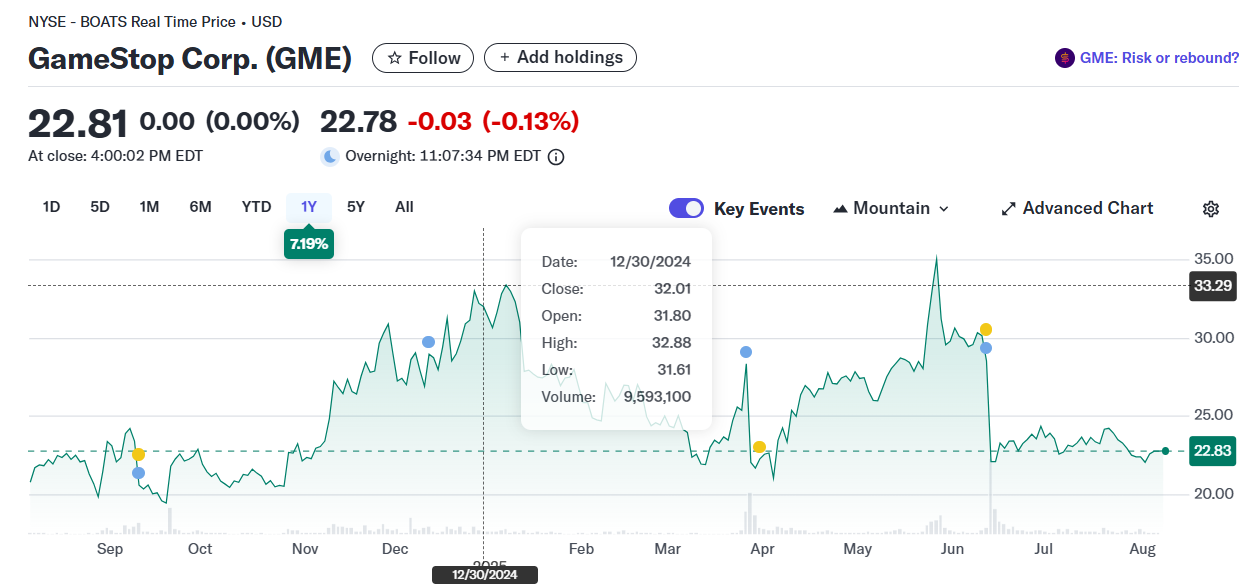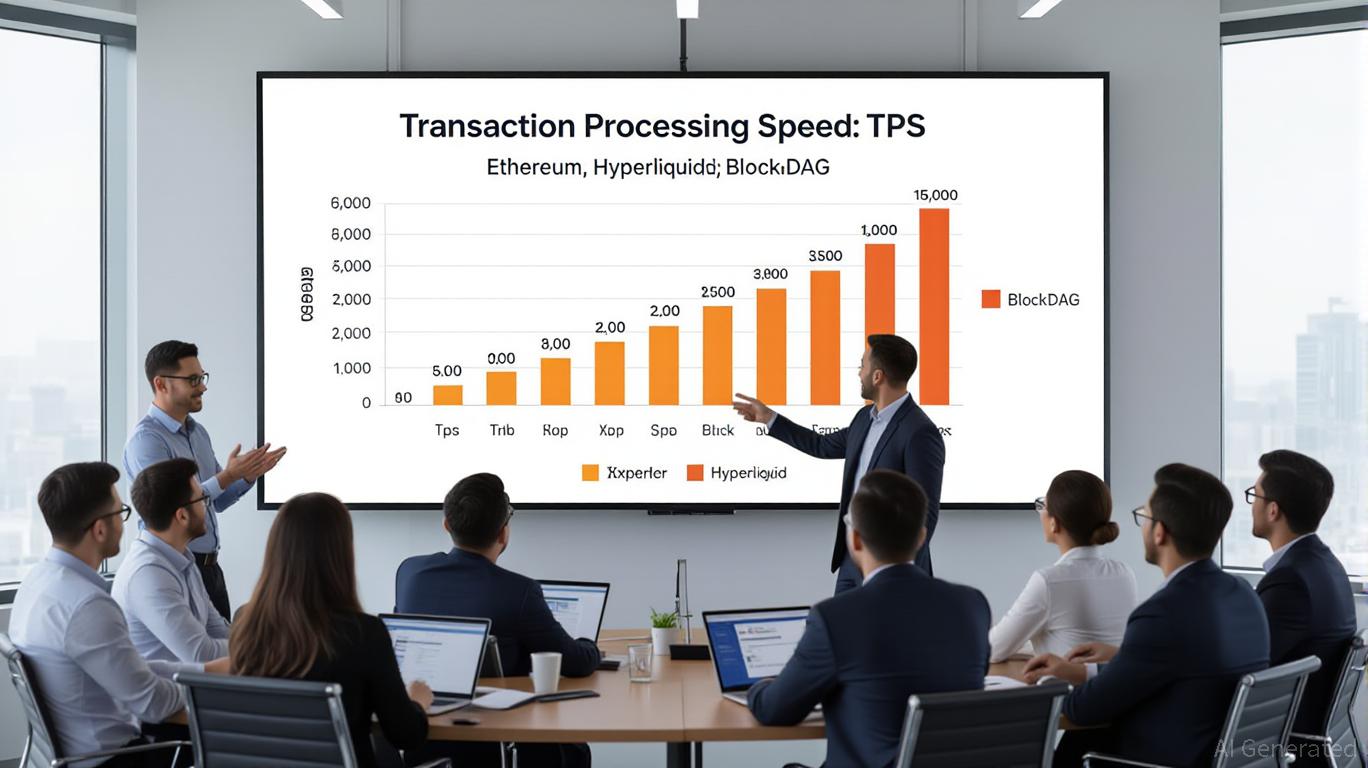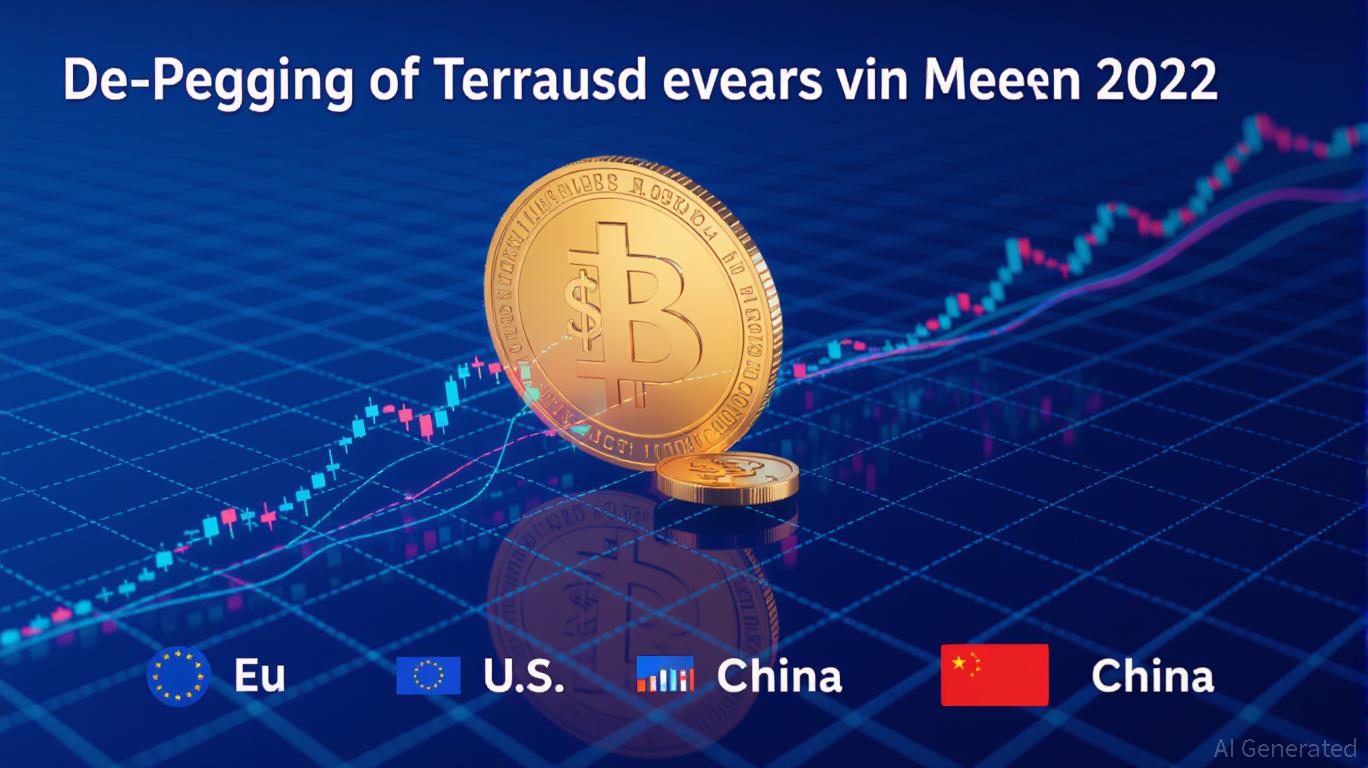Billionaire Bill Gross says GameStop now trades more like Bitcoin than a meme stock
Key Takeaways
- GameStop isn’t the meme it used to be, according to billionaire Bill Gross.
- The company recently purchased 4,710 BTC, and its stock price has begun to mirror Bitcoin's price movements.
Legendary investor Bill Gross said GameStop (GME) is shedding its meme stock roots and now “mimics Bitcoin.”
The “Bond King” recently told Business Insider that GameStop is “much less volatile” and no longer behaves like a meme stock, though he still considers it “a good candidate for option selling.”
According to Gross, GameStop has moved in a pattern similar to Bitcoin. The stock rose in late 2024, dipped in spring 2025, and then rebounded in May.
It has traded between $20 and $35 over the past 12 months, a stark contrast to its wild swings from $1 in the summer of 2020 to an intraday peak of $121 in January 2021.

GameStop reached a 12-month high above $35 in May, just one day before the company revealed its first Bitcoin purchase . GameStop’s 4,710 BTC stash is now valued at around $539 million.
The stock has since declined; it closed at approximately $23 on Wednesday, down 27% year-to-date, per Yahoo Finance data .
Gross said he’s steering clear of new meme stocks like American Eagle, despite profiting from shorting GameStop and AMC during the 2021 trading frenzy. American Eagle recently gained meme stock status after a Sydney Sweeney ad campaign fueled retail buzz.
He noted that retail traders are focusing on tech giants Microsoft and Meta, which are up 30% and 25% this year, respectively, due to artificial intelligence enthusiasm.
GameStop plans more Bitcoin investments and may accept crypto for trading cards
GameStop, holding over $9 billion in cash and marketable securities, intends to continue investing in Bitcoin and other digital assets.
However, unlike Strategy, formerly known as MicroStrategy, the largest corporate holder of Bitcoin, and others, the video game retailer is following its own playbook .
CEO Ryan Cohen said previously that the company would be selectively engaging when the risk-reward balance is favorable. Cohen also discussed the potential for accepting crypto payments for trading cards, dependent on customer interest.
Disclaimer: The content of this article solely reflects the author's opinion and does not represent the platform in any capacity. This article is not intended to serve as a reference for making investment decisions.
You may also like
Top 4 Bullish Cryptocurrencies in 2025: ETH, XRP, HYPE, and BlockDAG
- 2025 crypto market prioritizes projects with strong tech, utility, and institutional backing, led by ETH, XRP, HYPE, and BlockDAG. - Ethereum's Pectra upgrade boosted scalability, attracting $145B in RWA tokenization and 5% ETF absorption via improved Layer-2 solutions. - XRP gained $1.2B ETF inflows post-regulatory clarity, while Hyperliquid's $43–$44 price range reflects demand for fast, low-cost DeFi trading. - BlockDAG's 15,000 TPS hybrid PoW-DAG architecture and $383M presale position it as a scalab

Shiba Inu's $0.000020 Breakout: Speculative Hype or Strategic Inflection Point?
- Shiba Inu (SHIB) hovers near $0.000020 amid debates over whether its price surge reflects speculative hype or genuine ecosystem-driven value. - Shibarium's 1.5B+ transactions and 30% gas fee cuts correlate with SHIB's resilience, suggesting utility-driven demand despite 39% volume declines. - Deflationary burns reduced supply by 41% in 2025, but macroeconomic factors and whale activity remain key volatility drivers for the token. - Ecosystem expansion into AI, gaming, and metaverse projects aims to trans

The New Gold Rush: Capital Efficiency and Presale Dynamics in Q4 2025 DeFi
- Q4 2025 DeFi balances institutional stability with speculative presales, driven by capital efficiency metrics reshaping asset allocation. - Core-satellite strategies allocate 60-70% to ETH/AAVE (36.4%-72% gains) and 20-30% to high-yield presales like Remittix ($HYPER) offering 205% APY. - Bitcoin DeFi TVL hits $5-6B BTC via layer-2 solutions, while omnichain platforms and AI tools redefine liquidity and institutional adoption. - High-risk presales (e.g., MAGACOIN FINANCE's $12.8M raise) highlight innovat

Stablecoin Systemic Risks and Regulatory Gaps: Implications for Global Investors
- Stablecoins face structural fragility and regulatory divergence, risking systemic collapse amid fragmented global oversight. - Algorithmic models like UST and USDC exposed liquidity mismatches, with algorithmic failures causing $200B+ losses in hours. - EU's MiCA enforces reserve transparency while U.S. GENIUS Act lacks consumer protections, creating uneven investor risk landscapes. - China's state-controlled stablecoins and global DeFi adoption highlight growing systemic risks, including 63% crypto crim
